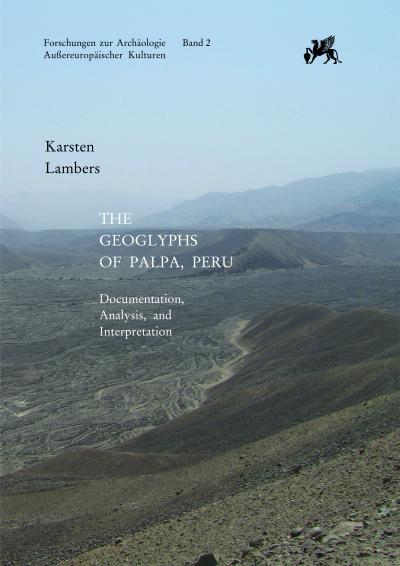The geoglyphs of Palpa, Peru: Documentation, analysis and interpretation
https://doi.org/10.34780/faak.v2i0.1000
##submission.synopsis##
The Geoglyphs of Palpa, Peru is a revision of the author´s Ph.D. thesis. In this study, the famed geoglyphs of the Paracas and Nasca cultures on the south coast of Peru are investigated in order to better understand their function and meaning. Combining aerial photogrammetry, archaeological fieldwork, and GIS-based analysis, more than 600 geoglyphs in the vicinity of the modern town of Palpa were recorded and analyzed. This interdisciplinary approach enabled the establishment of the first digital archive of these prehispanic monuments. It also led to important new insights into the origin, development, and spatial context of the geoglyphs. The Palpa dataset was furthermore used to test a recent model that explains the function and meaning of the Nasca geoglyphs in terms of Andean social, cultural, and religious traditions. The results of this study indicate that the ancient activities which took place on the geoglyphs revolved around concepts of water and fertility, and were a means of expressing social status and cultural concepts. The geoglyphs integrated the desert into the cultural landscape of the valley-based Paracas and Nasca societies, and were thus a valuable cultural resource that can still be appreciated today.
##submission.chapters##
-
1. INTRODUCTION
-
2. THE GEOGLYPHS IN THE NASCA REGION
-
3. GEOGLYPH RESEARCH IN THE NASCA REGION
-
4. THE NASCA-PALPA PROJECT
-
5. DOCUMENTATION OF THE PALPA GEOGLYPHS
-
6. ARCHAEOLOGICAL ANALYSIS OF THE PALPA GEOGLYPHS
-
7. DISCUSSION: THE ANDEAN MODEL AND THE PALPA GEOGLYPHS
-
8. RESULTS AND CONCLUSIONS
-
9. APPENDIX
-
RESUMEN
-
REFERENCES
-
PICTURE CREDITS
-
LIST OF ILLUSTRATIONS




